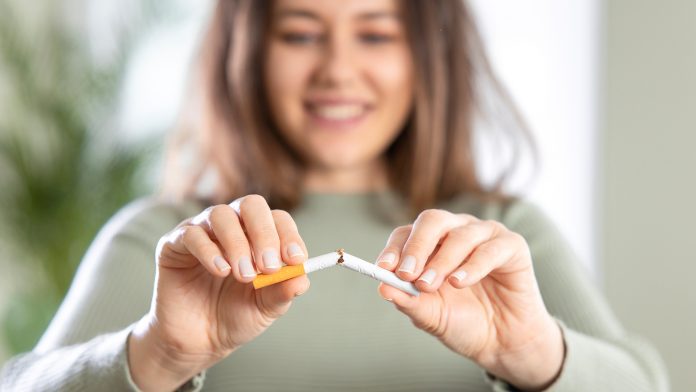
A systematic review performed by researchers from the University Hospital of Dijon has identified that non-invasive brain stimulation (NIBS) may be an effective solution to help people quit smoking.
The research, published in the scientific journal Addiction, found that non-invasive brain stimulation improved smoking abstinence rates three months and six months following quitting when compared to sham brain stimulation. The discovery may help to revolutionise treatments for people who want to stub out the hazardous habit.
What is non-invasive brain stimulation?
Non-invasive brain stimulation has transpired as a promising therapeutic method for curbing alcohol use disorder and a range of other substance-related and addictive disorders in recent years. Moreover, NIBS treatments have demonstrated strong performance in curing tobacco use disorder; however, there is little research on its long-term efficacy.
There are two types of non-invasive brain stimulation that are predominantly implemented: transcranial direct current stimulation (tDCS) and transcranial magnetic stimulation (TMS). TDCS administers a low-intensity direct current through the brain via electrodes placed on the scalp of the patient, which modulates neuronal excitability. In contrast, TMS employs a metallic coil placed on the patient’s scalp that generates magnetic pulses that cause brief electrical currents in the cortical tissue.
Enhancing smoking abstinence
To evaluate the long-term performance of non-invasive brain stimulation for increasing smoking cessation, the University Hospital of Dijon conducted a systematic review and meta-analysis. The study utilised data from seven randomised controlled trials of NIBS on adults aiming to quit smoking. The trials included a follow-up of more than four weeks, with the team combining the results to measure the overall impact of NIBS on smoking cessation. 699 participants were included in the trial, and all control groups in the studies received sham NIBS.
The results signified that the risk ratio of sustained abstinence of any form of NIBS relative to sham NIBS was 2.39, meaning that smokers who received non-invasive brain stimulation were 2.39 times more likely to quit smoking long-term than those who received sham NIBS. Moreover, the ratio was more significant when looking at different types of NIBS or stimulation of other brain areas. However, a high risk of bias was identified in four of the included studies.
Dr Benjamin Petit, the lead author of the study, concluded: “While our review appears modest, with only seven included studies, a low confidence level and a substantial inter-study variability, the results appear to be robust, and we feel confident in suggesting that NIBS is a technique of interest for both short-term and sustained smoking cessation. In addition, we identified several scientific trials currently underway in this particular field. In the near future, NIBS might be recognised as a promising new option for assisting individuals who wish to stop smoking.”









